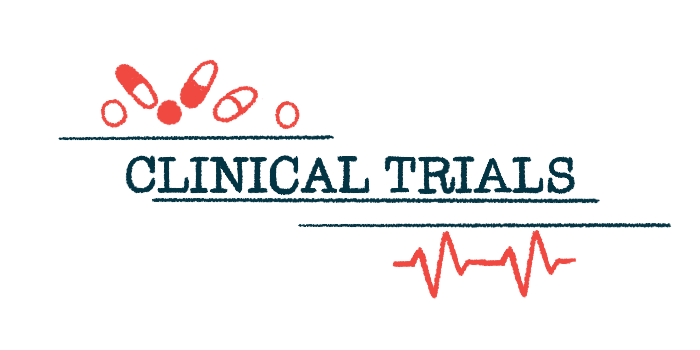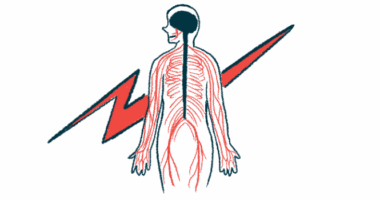4 years of Skyclarys slows Friedreich’s ataxia progression
Extension study data also show therapy maintained upper limb coordination

Four years of daily treatment with Skyclarys (omaveloxolone) continues to slow the progression of Friedreich’s ataxia (FA) compared to what would be expected in patients without treatment.
That’s according to new data from the extension study of the Phase 2 MOXIe clinical trial (NCT02255435), which also showed the therapy maintained upper limb coordination and bulbar function in 149 patients with FA.
In addition, two years of treatment with the investigational therapy vatiquinone resulted in a significant slowing of disease progression in adults with FA relative to untreated natural history, according to data from a separate Phase 2 trial (NCT01728064).
These data were recently presented at the 2025 International Congress of Parkinson’s Disease and Movement Disorders in Honolulu, Hawaii.
“Because steady decline has long been the expectation in FA, these findings raise real hope that targeted therapies could alter the course of the disease,” Liana Rosenthal, MD, PhD, associate professor of neurology at Johns Hopkins University School of Medicine in Maryland, said in a press release. “Taken together, these findings mark real progress.”
Skyclarys approved to slow disease progression in people with FA
Skyclarys, marketed by Biogen, is an oral treatment approved to slow or stop disease progression in people with FA, ages 16 and older. It’s designed to activate Nrf2, a protein whose signaling is impaired in FA patients.
The therapy’s approval was supported by data from the two-part MOXIe clinical trial, which tested the treatment against a placebo in 172 participants, ages 16-40.
In its first part, 12 weeks of once-daily Skyclarys resulted in increases in Nrf2, accompanied by improvements in neurological function, as assessed by the modified Friedreich’s Ataxia Rating Scale (mFARS) and other tests. In the study’s second part, which spanned 48 weeks, or about one year, Skyclarys treatment significantly improved mFARS scores relative to the placebo group.
Participants who completed both parts of MOXIe had the option to enter an open-label extension (OLE) study, in which all received Skyclarys. After nearly three years of daily treatment, gains achieved in the main trial were maintained, with lower mFARS scores among patients who had been on Skyclarys since the study’s start compared with those originally on the placebo.
Presentation shares new 4-year open-label extension data
New four-year OLE data have now been shared in a presentation titled “Long-Term Efficacy and Safety of Omaveloxolone in Patients With Friedreich Ataxia: 4-Year Data From the Ongoing MOXIe Open-Label Extension.”
This analysis focused on 149 patients, including those who were treatment-naive upon entry into the OLE, those who received Skyclarys in part 2 of MOXIe and continued treatment in the OLE, and the overall population. The primary goal was to change the mFARS and FA Activities of Daily Living (FA-ADL) scores from the OLE’s start, or baseline, through week 216, or about four years.
Consistent with starting treatment earlier, patients who received Skyclarys in MOXIe part 2 and continued in the OLE had lower baseline mean mFARS scores than those who were treatment-naive before the OLE (41.2 vs. 43.3). Similar results were seen in FA-ADL scores (12 vs. 12.7).
Overall, patients treated with Skyclarys demonstrated a mean change from baseline in mFARS scores of 4.4, representing a 1.1-point increase per year over four years. For comparison, FA progression in natural history studies has been reported to increase mFARS scores by 1.8 points to 2 points per year.
Over the same period, Skyclarys-treated patients achieved a mean FA-ADL score of 2.79, indicating a 0.7-point rise per year. The overall findings were comparable to those of treatment-naive individuals or those who continued treatment in the OLE.
With Skyclarys treatment, there was also no worsening in two mFARS subdomains: upper limb coordination and bulbar function, or control of the muscles of the face, mouth, and throat.
Vatiquinone designed to block activity of key protein
In a separate second presentation, titled “Long-Term Effectiveness and Tolerability of Vatiquinone in an Adult Friedreich’s Ataxia Population,” researchers reported on two-year data from a Phase 2 study that examined the investigational oral therapy vatiquinone in FA patients.
Developed by PTC Therapeutics, vatiquinone is designed to block the activity of a protein called 15-lipoxygenase, which is expected to reduce brain inflammation and cell damage, thereby slowing FA progression.
PTC launched a Phase 2 clinical trial (NCT01728064) in 2012 to test the safety and effectiveness of vatiquinone in adults with FA. Data showed that vatiquinone failed to outperform a placebo in slowing mFARS progression. Still, more vatiquinone-treated patients experienced an improvement of three points or more on mFARS than those on the placebo (66% vs. 43%).
The company then initiated a Phase 2/3 trial called MOVE-FA (NCT04577352), which tested vatiquinone against a placebo in 146 FA patients ages 7 and older. Again, mFARS scores were not significantly different between vatiquinone and the placebo. Even so, the results showed a significant slowing of the decline in upright stability with vatiquinone, which PTC argued was the most sensitive assessment in these patients.
Participants who completed the MOVE-FA trial had the option to enter an OLE study in which all received long-term vatiquinone treatment.
The findings in these [presentations] are exciting for their potential to change the long-term outlook for individuals with Friedreich’s ataxia. They show that multiple agents are now demonstrating durable benefit in FA.
Last year, PTC announced the results from a prespecified analysis comparing data from the extension study with a large natural history study, known as the FA Clinical Outcome Measures Study, or FACOMS (NCT03090789). Three years of data indicated that vatiquinone slowed the decline of mFARS scores by about 50%.
In August, however, the U.S. Food and Drug Administration declined to approve vatiquinone, citing a lack of adequate data to demonstrate the treatment’s effectiveness.
The newly presented two-year data reported on 41 patients enrolled in the first Phase 2 trial, which were compared to those from FACOMS. Patients receiving vatiquinone demonstrated a 0.917-point improvement in mFARS score, whereas the natural history group showed a 3.892-point worsening, representing a 4.809 difference in favor of vatiquinone.
“The findings in these [presentations] are exciting for their potential to change the long-term outlook for individuals with Friedreich’s ataxia,” Rosenthal said. “They show that multiple agents are now demonstrating durable benefit in FA. More broadly, they reflect a shift in [movement disorders] toward disease-modifying therapies, providing a model for how long-term follow-up and natural history data can guide progress in other rare neurodegenerative diseases.”








